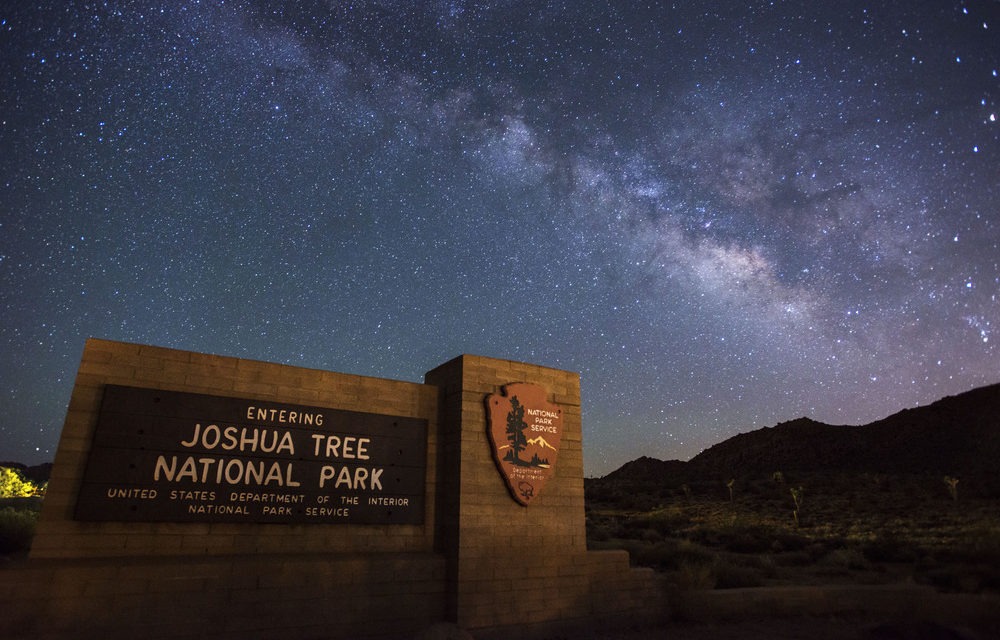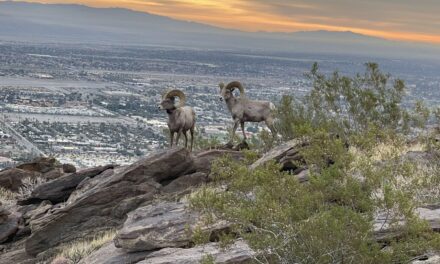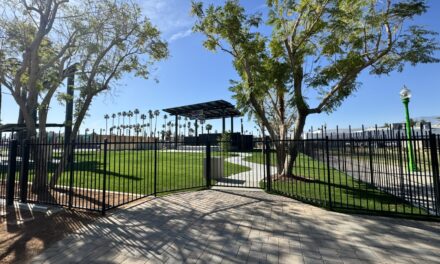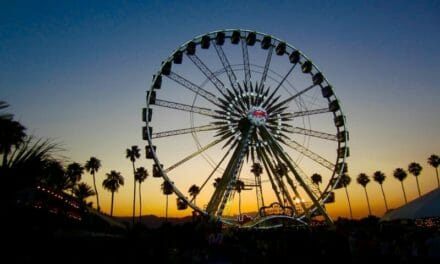In most urban areas, artificial lighting and smog wash out the stars. Many people grow up only seeing a few of the brightest points in the night sky and never realizing the grandeur of the Milky Way that humankind has enjoyed for tens of thousands of years. But there still are places where one can see the night sky.
Among Southern California’s darkest skies are those at Joshua Tree National Park. For many who’ve never seen the night sky before, the sight is absolutely startling and awe-inspiring.
Most campgrounds off the park’s main roads offer great views, but the best place always is in the backcountry. One relatively remote yet easy to access spot for stargazing is the Porcupine Wash-Ruby Lee Mill Site Trail, located in the Pinto Basin.
The 8.8-mile loop is surrounded by the Hexie and Pinto mountains that block the glow of nearby urban areas, and at night the nearby road is rarely traveled.
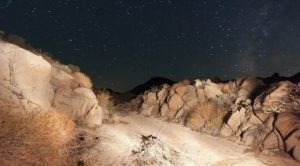
Pocupine Wash is a great place to get away from artificial light and stargaze.
To reach the trailhead, from the park’s Oasis Visitor Center on Utah Trail just south of Calif. Hwy. 62, take the former south. Once in the park, Utah Trail becomes Park Boulevard. Turn left/southeast onto Pinto Basin Road. In a little more than 16 miles, look for the Porcupine Wash trailhead parking lot on the road’s eight/south side. Park in the lot.
You need not do the whole trail to enjoy the night sky. In fact, hiking the trail at night would be dangerous and require a flashlight that diminishes your ability to see the night sky.
Instead, arrive before sunset and simply hike a hundred or so yards in. Find a nice flat spot, sit back, and watch the stars suddenly appearing like pinpricks on the darkening sheet above.
Stars by the season
What you’ll see in the night sky changes with each season.
In spring, two bright stars – orange Arcturus and blue Regulus – both are visible. The Big Dipper’s handle points toward Arcturus, which appears near dusk in the eastern sky. To the south, Regulus is in the constellation Leo’s front paw.
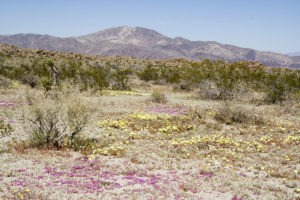
Pinto Mountain rises over a superbloom at Porcupine Wash.
Summer brings the spectacular band of the Milky Way, which is best seen on a moonless night. The Summer Triangle features the three bright blue stars, Vega, Altair and Deneb. Mid-August marks the Perseid Meteor Shower. If visiting in summer, do not hike the trail during the day – it is dangerously hot – but nights are comfortable.
Autumn offers the Great Square of Pegasus, which rises in the northeastern sky at dusk. The Andromeda Galaxy is a fuzzy patch near the square. Autumn days are great for hiking the trail but nights in the high desert can be cold.
Winter delivers the constellation Orion and the sky’s brightest star, Sirius, which is only 8.6 light years from Earth. The red star Aldebaran is the winking eye in the constellation Taurus. While late winter can have pleasant days, nights will be very cold.
Stargazing pointers
Some quick tips for stargazing:
- Go on moonless nights – Reflecting sunlight to Earth, the moon can reduce the number of stars you’ll see. Check the moon phases to find the perfect evening to stargaze.
- Only use red lights – The human eyes needs at least 20 minutes to adjust to low light, Bright non-red lights delay that process and can wash out the stars.
- Layer your clothing – The dry air at the higher elevations can make for chilly nights, even in summer. You’ll probably need a sweatshirt and jacket on July evenings, though during the day you would roast alive wearing that.
- Watch your step – Animals come out at night, and you don’t want to accidently step on a snake…or into a cactus or on an even rock. All will end your stargazing adventure.
- Bring a folding chair – One that you can lean back in will reduce neck strain. Sitting in one spot, even if you adjust the chair slightly to see different parts of the sky, will reduce the chances that you trample vegetation.
- Carry water – Many areas of the park, including Porcupine Wash, have no running water. Even if not hiking, the dry air will cause you to feel parched.
Hiking the trail
Should you decide to hike the trail during the day, spring is a great time to do so because of the many beautiful wildflowers. Birdwatching also is good there. There are plenty of jumbo rocks and boulders to explore and clamber over. You won’t find any Joshua trees here, though, as you’re in the Coloradan Desert, a subsection of the Sonoran Desert; Joshua trees only grow in the Mojave at higher elevations.
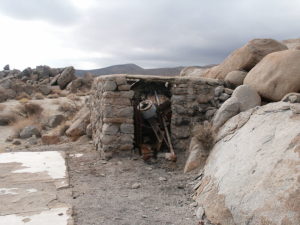
Should you hike the trail as well as stargaze, the ruins of the Ruby Lee Mill Site await.
Go counterclockwise on the hike. You’ll begin by passing a borrow pit. The northern part of the loop is a jeep trail and heads to the Ruby Lee Well and Mill Site.
At the base of the Hexie Mountains, the trail curves south to begin the far side of the loop. It then joins the intermittent Porcupine Creek and follows the wash back to the borrow pit and parking lot.
The washes can be sandy, so be sure to wear hiking boots with good traction and to bring a trekking pole. A map and compass as well as plenty of water are a good idea. The entire trail is open to the sun, so be sure to don sunscreen, sunglasses and sunhat.
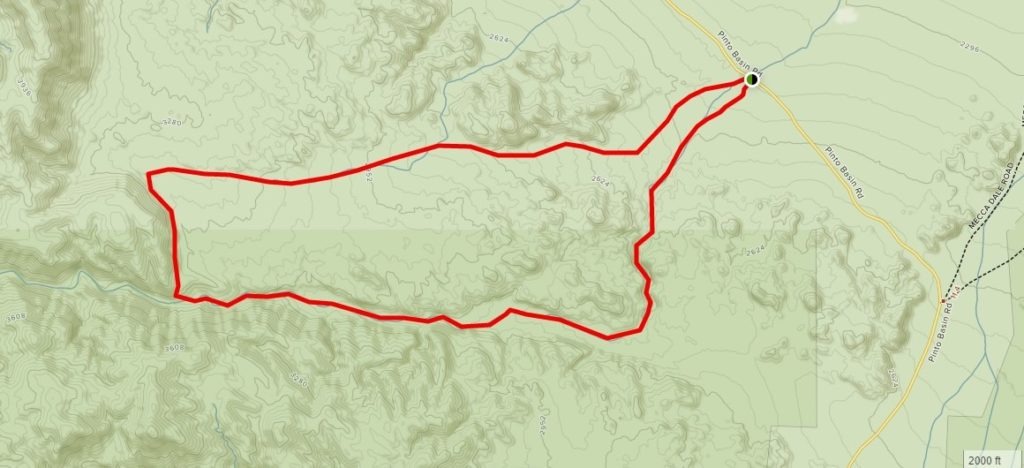
Porcupine Wash-Ruby Lee Mill Site Trail topo map
Image Sources
- Pocupine Wash: Rob Bignell
- Ruby Lee Well-and-Mill Site: Rob Bignell
- Joshua Tree National Park: NPS

